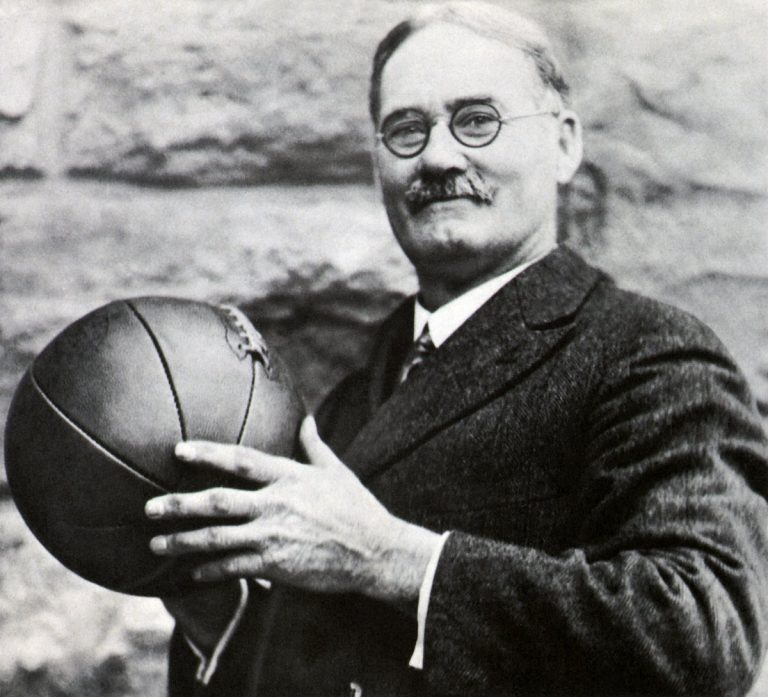It was at the YMCA International Training School that Naismith, sensing unrest in his class of young adult males who had to repeatedly endure calisthenics and children’s games in the tough Massachusetts’ winter of 1891, set out to devise a new game. Using the equipment available at his disposal and drawing from his childhood experience in a game called ‘duck on a rock,’ Naismith fashioned a game with a peach basket and soccer ball in which the goal of the players was to, through teamwork and finesse, lob the ball into the basket. A legend was born.
Naismith’s nascent game of basketball soon caught fire, spreading from town to town through YMCA’s, colleges, and word-of-mouth. In the subsequent couple of years, Naismith had the opportunity, while at the YMCA International Training School, to coach Phog Allen, who later followed Naismith after Naismith’s tenure as head basketball coach at Kansas University.
In 1894, Naismith married Maude Shermann, and in 1895 moved to Denver, Colorado, to become the Physical Education director at a YMCA there. It was in Colorado that, in 1898, Naismith obtained a medical degree from the University of Colorado Medical School. That same year, he left Colorado to become the assistant gymnasium director and basketball coach at the University of Kansas.
Although he eventually became the only head coach in Kansas men’s basketball history to compile a losing record (ironic, isn’t it?), Naismith’s legacy was already cemented. While he gave up coaching in 1907, he remained the director of physical education at Kansas until 1937, with a three-year stint in the army during World War I. In that stint, Naismith, by then an ordained Presbyterian minister, served as a captain and chaplain or the Kansas First Infantry Regiment, which was stationed along the Mexican border for part of the war.
Immediately after the war, Dr. Naismith accepted a position as a YMCA director in France before returning stateside to resume physical education duties at Kansas.
In 1925, Naismith accepted American citizenship. In 1936, three years before his death, he had the opportunity to see his sport in action at the 1936 Summer Olympic Games, the first time men’s basketball was officially recognized as an Olympic Sport (it had been a demonstration sport in 1904). Though he typically shunned publicity, Naismith accepted an invitation to appear at the opening ceremony and to throw up the first jump ball, an honor he reluctantly accepted.
In 1939, Dr. James Naismith, after a long and fruitful life that touched the spirits of millions worldwide, succumbed to a brain hemorrhage. He was 78 years old.

